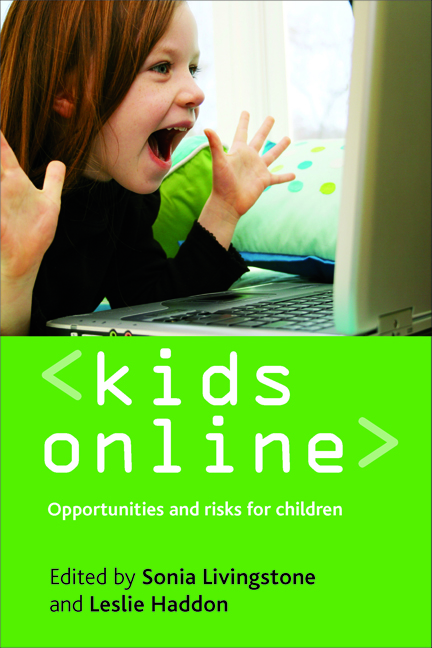Book contents
- Frontmatter
- Contents
- Notes on contributors
- Acknowledgements
- one Introduction
- Section I Researching European children online
- Section II Going online: new opportunities?
- Section III Going online: new risks?
- Section IV Policy implications
- Appendix A List of country codes
- Appendix B Children and parents online, by country
- Appendix C The EU Kids Online network
seven - Adolescents and social network sites: identity, friendships and privacy
Published online by Cambridge University Press: 15 July 2022
- Frontmatter
- Contents
- Notes on contributors
- Acknowledgements
- one Introduction
- Section I Researching European children online
- Section II Going online: new opportunities?
- Section III Going online: new risks?
- Section IV Policy implications
- Appendix A List of country codes
- Appendix B Children and parents online, by country
- Appendix C The EU Kids Online network
Summary
In the past five years, many European teenagers have started to use social networking sites such as MySpace, Facebook and Bebo. Social networking sites can be defined as ‘web-based services that allow individuals to (1) construct a public or semi-public profile within a bounded system; (2) articulate a list of other users with whom they share a connection; and (3) view and traverse their list of connections and those made by others within the system’ (boyd and Ellison, 2007: 211). While the specific social networking sites that are most popular among teenagers differ across European countries, their most important common aim is to enable teenagers to communicate with other people from their extended social network. Unlike earlier web-based social applications, such as chat rooms, social networking sites encourage the activation of latent ties that already exist offline rather than the creation of new, purely online-based ties (Haythornwaite, 2005; Valkenburg et al, 2006; Ellison et al, 2007).
Although the nature of social networking sites contradicts popular concerns about the lonely adolescent who connects online with strangers, public responses to adolescents’ use of social networking sites have been critical. The ‘MySpace generation’, it has been suggested, is narcissistically obsessed with digital self-presentation, prefers the quantity of friendships over their quality, and lacks any sense of privacy in publicly disclosing intimate information (for a summary of the critique, see Hinduja and Patchin, 2008; Livingstone, 2008). Although these concerns resemble anxieties that seem to emerge around each new technology (McRobbie and Thornton, 1995), they do point to three important aspects of adolescents’ use of social networking sites: identity construction; (b) friendships; and (c) privacy.
Identity construction, the development of stable and fulfilling friendships and the ability to disclose private information in appropriate ways and settings are important developmental tasks in adolescence.
However, despite the significance of these developmental tasks and their potential relation to adolescents’ use of social networking sites, research on the issue is still scarce and scattered. This chapter therefore systematises and reviews the available literature, trying to answer the question of how adolescents’ use of social networking sites shapes, and is shaped by, the three developmental tasks just mentioned.
- Type
- Chapter
- Information
- Kids OnlineOpportunities and Risks for Children, pp. 83 - 94Publisher: Bristol University PressPrint publication year: 2009



